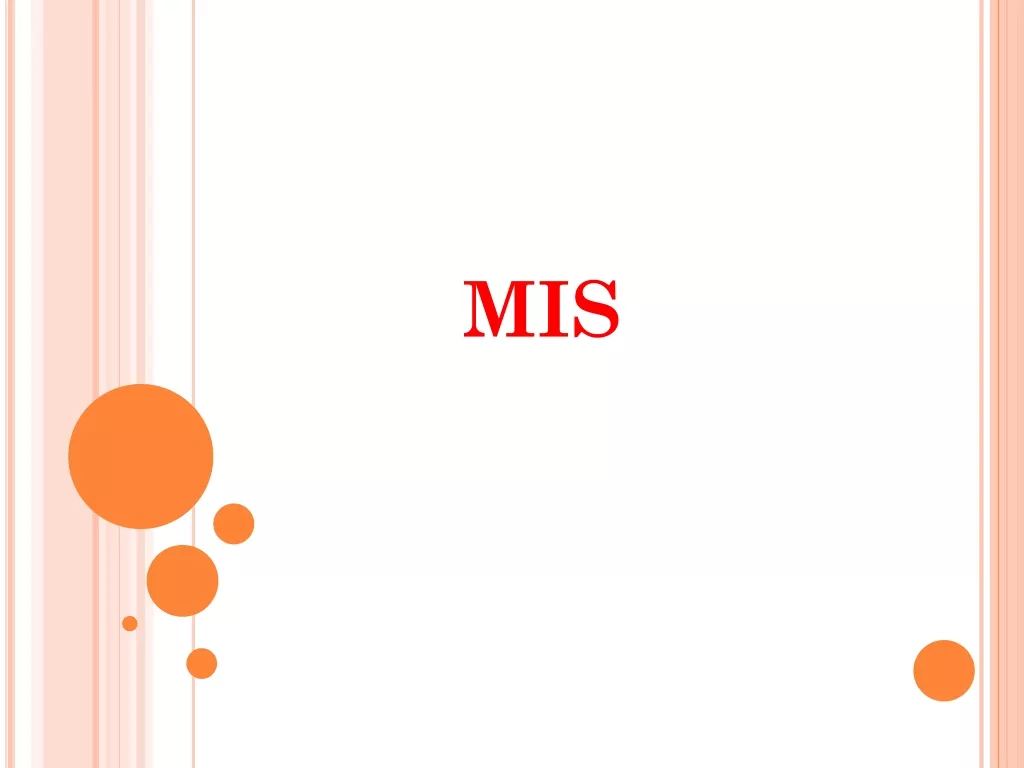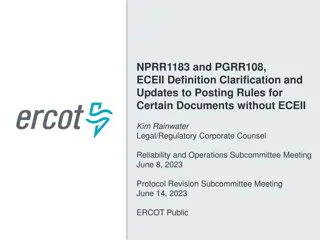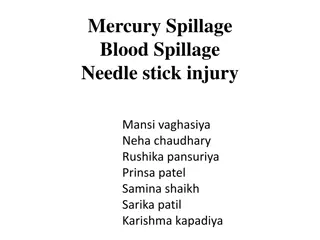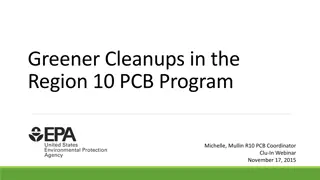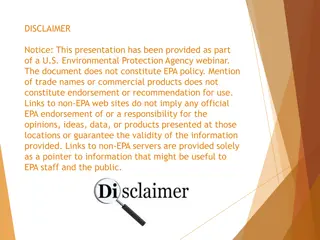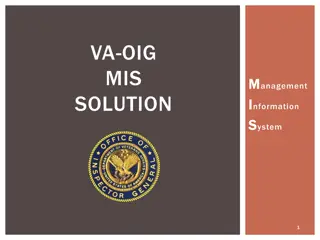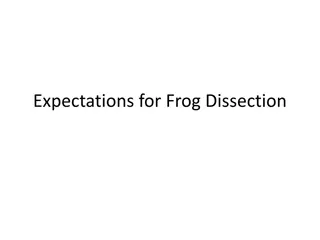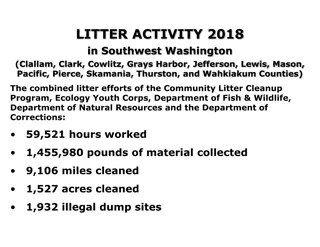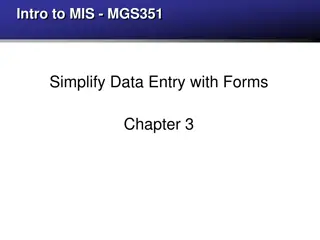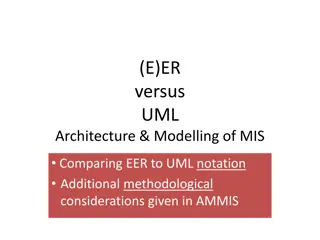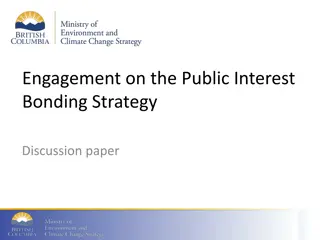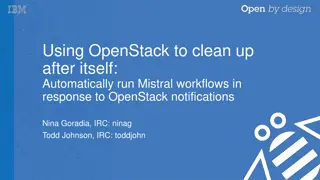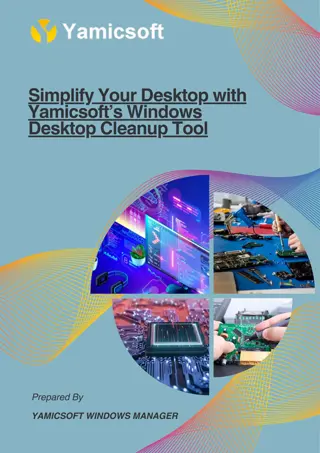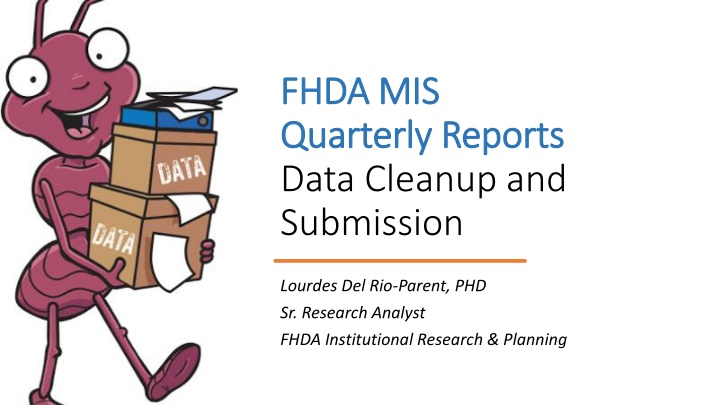
Data Cleanup and Submission Process for MIS Quarterly Reports at FHDA
Explore the thorough process of cleaning and submitting data for MIS quarterly reports at FHDA, including identifying errors, utilizing external data sources, and understanding the impact of submission errors on various reports and relationships.
Download Presentation

Please find below an Image/Link to download the presentation.
The content on the website is provided AS IS for your information and personal use only. It may not be sold, licensed, or shared on other websites without obtaining consent from the author. If you encounter any issues during the download, it is possible that the publisher has removed the file from their server.
You are allowed to download the files provided on this website for personal or commercial use, subject to the condition that they are used lawfully. All files are the property of their respective owners.
The content on the website is provided AS IS for your information and personal use only. It may not be sold, licensed, or shared on other websites without obtaining consent from the author.
E N D
Presentation Transcript
FHDA MIS FHDA MIS Quarterly Reports Quarterly Reports Data Cleanup and Submission Lourdes Del Rio-Parent, PHD Sr. Research Analyst FHDA Institutional Research & Planning
Goals and Objectives Goals and Objectives Provide an overview of the MIS quarterly reports Identify reports or data files submitted during the MIS quarterly submission Illustrate relationships/dependences between reports Define type of data errors: syntactical, referential, quality Summarize the data cleanup process for the MIS quarterly reports at FHDA, prior and after the original submission Identify some of the external data sources used for the data cleanup Describe the use of technologies for data cleanup Illustrate key steps for cleaning data (i.e., data cleanup flow) Identify resources to review submitted data prior resubmission at the end of the academic year Identify limitations of the data cleanup process Describe the role of data custodians and executive managers
MIS Quarterly Reports MIS Quarterly Reports CB Courses SB Student Characteristics XB Sections CW SE EOPS CalWorks XF Meets SV VTEA SD DSPS XE Faculty Assignment EB Faculty Demog SG Spec Pop SS 3SP SX Enrollment
MIS Submission Errors MIS Submission Errors 1. Syntactical errors signal problems with data values in the report or data file. Scope: Within the report Data values do not meet specs, as documented in the MIS DED (data element dictionary) Example 1: Data value for course credit status equal to M (not in the MIS DED) Example 2: Course classified as credit-degree applicable and basic skills (discrepancies between data values in the report) 2. Referential errors indicate a broken relationship between files. Scope: Between reports Example: The student ID in the SE (EOPS) report does not appear in the SB (Student Characteristics) report. 3. Quality errors relate to the data not meeting expected parameters. Scope: Varies Example: The percentage of records with RD (report delayed) as official grade > 2.5.
The Cascade Effect of Submission Errors The Cascade Effect of Submission Errors CB Courses XB Sections XF Meets EB Faculty Demographics XE Faculty Assignment SX Student Enrollment
Overview of MIS Quarterly Data Cleanup Overview of MIS Quarterly Data Cleanup Identify discrepancies (1) between CCC and Banner data and (2) within related Banner tables/data. Categorical groups need to confirm lists of students served; otherwise, data are not included. Gather CCC data (e.g., COCI) and update local tables. Data Custodians make modifications in Banner or COCI, if applicable. Data are extracted for MIS reports on submission date. Records with errors or unresolved issues are deleted. Publish submission report on FHDA IRP MIS website identifying data issues. Send email to data custodian and their managers. Summer, fall, and winter reports are resubmitted on June- July. Submit data to CCC.
Example 1. Data Cleanup for CB Example 1. Data Cleanup for CB- -Courses Courses Run Argos to identify discrepancies between the CCC course inventory and Banner data and email error report to curriculum coordinators. Days prior submission test the CB using CCC MIS system to identify and report any new data cheks. Download and process COCI and MIS CB master data. Update local copy of CCC course inventory. Identify all courses in Banner with enrollment for the academic year.
Example 1. CB Example 1. CB- -Courses Argos Reports Courses Argos Reports Two Argos reports are used to identify discrepancies between the CCC curriculum inventory (COCI) and Banner-production data for courses offered during the academic year. Argos only sends an email to the data custodian (i.e., curriculum coordinator) when at least one course shows a discrepancy error. The email includes a message and a CSV file. The message explains the purpose of the report and provides instructions on how to address discrepancies. The CSV file identifies the course, the issue/discrepancy, and the data in COCI and Banner.
Example 1. CB Argos Email Message Example 1. CB Argos Email Message
Example 1. Example 1. CB Argos CB Argos Email 1 Email 1 Attachment Attachment
Example 1. Example 1. CB Argos CB Argos Email 2 Email 2 Attachment Attachment
Data Cleanup, Categorical Programs Data Cleanup, Categorical Programs At FHDA, data custodians (e.g., program coordinators) for categorical programs (e.g., EOPS, DSPS, CalWorks) and some special population groups (e.g., College Now, Middle College, Puente, Umoja, Pilot Bachelors Degree) need to review and confirm the list of students served by the program during the reporting term before submission date. Otherwise, their data are not submitted. At least three weeks prior to submission, Argos reports are emailed to data custodians at least once a week. Once the Argos report the data custodian receives shows the correct data (i.e., data in Banner- production are correct), they email the MIS coordinator confirming headcount for the group.
Example 2. SE Example 2. SE- -EOPS Data Cleanup EOPS Data Cleanup Once the report shows no error and all and only students served are included, the data custodian confirms the list/headcount and Argos stops . Data custodian makes modifications to the Banner- production system. EOPS Argos runs at least once a week for at least three weeks prior submission. Prepare and set Argos report to run.
Example 2. SE Example 2. SE- -EOPS Argos Email Message EOPS Argos Email Message
Example 2. Example 2. SE SE- -EOPS EOPS Argos Email Argos Email Attachment Attachment
FHDA Argos Reports used for MIS Quarterly FHDA Argos Reports used for MIS Quarterly A list of Argos reports used for data cleanup at FHDA is available at the FHDA IRP MIS Reports webpage. 1. Go to: http://research.fhda.edu/mis_reports/ 2. Under the Introductionsection, click on Argos Reports Used at FHDA for the MIS Quarterly Data Cleanup to download an Excel file with the list. These reports are used to cleanup data in Banner-Production, which also helps in the validation/data cleanup for other reports (e.g., apportionment 320, 321).
Resources to Review Submitted Data Prior Resources to Review Submitted Data Prior Resubmission at the End of Academic Year Resubmission at the End of Academic Year California Community Colleges Chancellor s Office MIS Data Mart (https://datamart.cccco.edu/Default.aspx) MIS Quarterly Submission Reports (http://research.fhda.edu/mis_reports/mis_quarterly_submssion_rep ort/)
FHDA IRP MIS Quarterly Submission Reports FHDA IRP MIS Quarterly Submission Reports The quarterly submission reports are designed to (a) provide a quick summary of issues that may threaten the validity of the data submitted to the California Community Colleges Chancellor s Office, (b) keep track of edits or errors that need to be resolved prior re-submission, (c) help users reconcile figures shown in the MIS reports (e.g., MIS Data Mart) with those produced for accountability, apportionment, or categorical program allocations reports, and (d) inform managers at the District regarding problems related to the data submitted by their divisions or departments. To access the report, click on the term for the academic year. (http://research.fhda.edu/mis_reports/mis_quarterly_submssion_repor t/)
Limitations of the FHDA MIS Data Cleanup Limitations of the FHDA MIS Data Cleanup Data custodians are the backbone of the data cleanup. Their expertise and work ethics are what determine the quality of the data submitted. At FHDA, data cleanup procedures/reports have been designed with the collaboration of data custodians and modified based on their feedback. However, because they are mostly classified employees, their efforts to keep the system up-to-date may be limited. For example, a data custodian for the office of admissions & records at a college may not be able to avoid the significant number of enrollment records with RD (i.e., missing official grade) in the Banner system; these records may need to be deleted from the SX-Enrollment file to avoid a quality check that would have stopped the submission.

